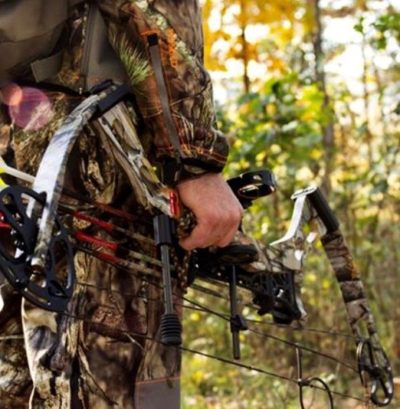
On The Blood Trail : Archery Recovery

Starting Too Soon
One of the most common blood trailing mistakes can begin before you even start following the blood trail. Starting too soon. If you had a marginal to poor hit, back-out and give the deer some time. How much? It can vary depending on if you hit one lung, liver, or way back near the stomach and guts.
Deer can live a long time with a one lung hit, you could be waiting upwards of 4-6 hours to start tracking. For liver or stomach, they can live even longer and you may have to wait 10-12 hours before beginning to track—and the deer may still be alive. It is always better to play things safe and avoid bumping the deer out of a bed if you think the hit was poor.
If you did not see or hear the deer crash, but the hit was great—give it a little time, sneak out of the tree and go recover the arrow (if possible) for more intel. If you didn’t see or hear the deer crash, but you have a great hit with a blood covered arrow, I would still give it at least 30 minutes to an hour before tracking. The deer is probably dead, but you just never know.
Also, pay attention to timing as it relates to still being able to take home some fresh venison. If you put a bad gut shot on a deer at 7:30pm, the deer may live until 4:00am or longer for example, giving you an opportunity to recover the deer and salvage the meat, if you track and find the deer at first light in the morning.
Moving Too Fast on the Trail
When beginning a blood trail on a marginally hit deer, go slow and with multiple people if possible. One of the most common mistakes is starting too soon, and then going way too fast while on the blood trail.
Search methodically, making sure to look on both sides of the trail where a deer could have potentially crashed. When you take up the blood trail, use quality lights. It is a good idea to always have a headlamp and a hand flashlight. If for some reason you need to look off the trail to the side for blood, your headlamp will illuminate your view and you can keep your hand light on the trail in front.
If you have the luxury of tracking with multiple people, have someone hang back and move slowly near the last sight of blood. This is very beneficial if the trail gets sparse. Having someone stay back in case the trail takes a turn and you need to continue in a different direction.
If you are by yourself, marking last blood with a backup flashlight, illuminated arrow nock or something visible can at least allow you to go ahead and grid search for more blood. If you don’t find more blood, at least you have marked the last blood and can make a decision from there.
 How to know when to start tracking your animal after your shot. Being educated on the varieties of blood colorations and odors can make or break your recovery process. A good hit producing bright red blood could mean you have a heart shot. A dark deep colored blood typically indicates a liver hit. Blood with small, oxygenated bubbles usually means a lung hit.
How to know when to start tracking your animal after your shot. Being educated on the varieties of blood colorations and odors can make or break your recovery process. A good hit producing bright red blood could mean you have a heart shot. A dark deep colored blood typically indicates a liver hit. Blood with small, oxygenated bubbles usually means a lung hit.
If you find your arrow into a track job and discover you had little penetration and the arrow is covered with brown and greenish blood with a bad odor—that is an indication of a gut shot and you need to back out and give the deer time.
A slew of hair on a low or high hit deer could indicate that you grazed the deer. Your deer might survive on a grazed puncture wound, but don’t jump to conclusions, you owe the animal your best recovery effort.
Wrapping It Up
Everyone loves a great hit coupled with a small track job to increase suspense, but blood trailing can also be filled with disappointment and disgust if you check too many boxes on the ‘do-not’ list.
Wildside Outdoors is always here to help with any questions concerns or if you're looking for anything hunting related we will try our best to help you get everything you need for your next hunt.


